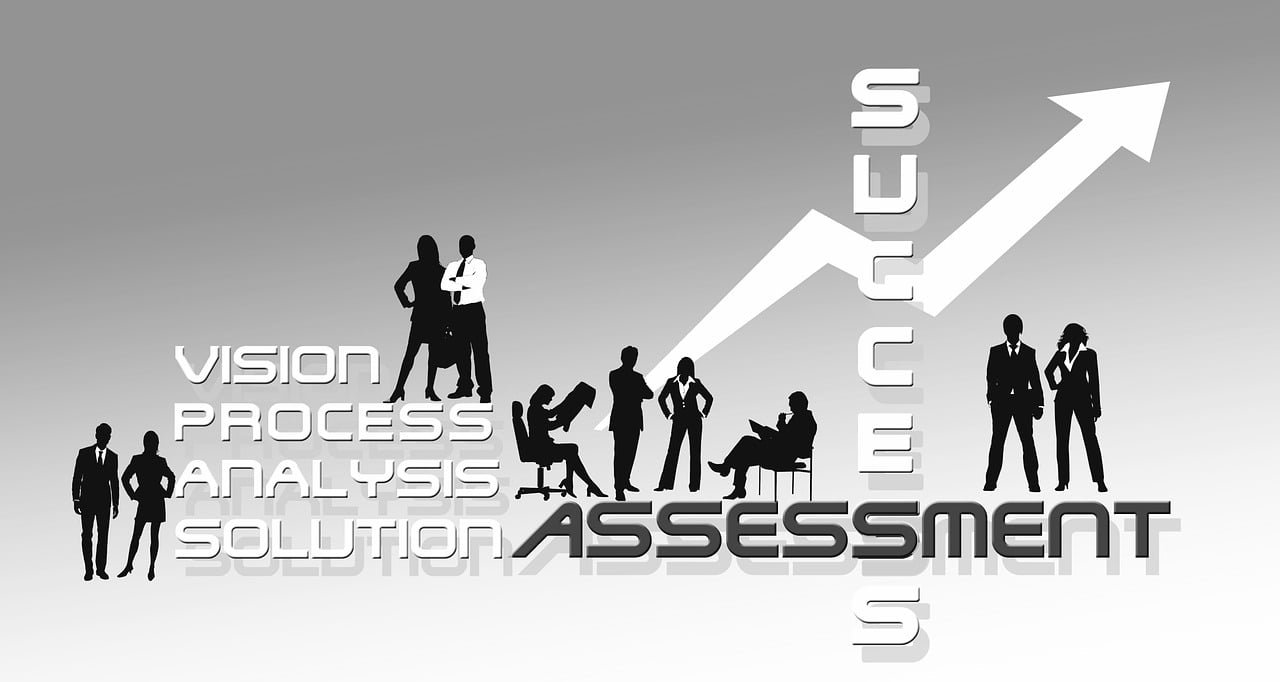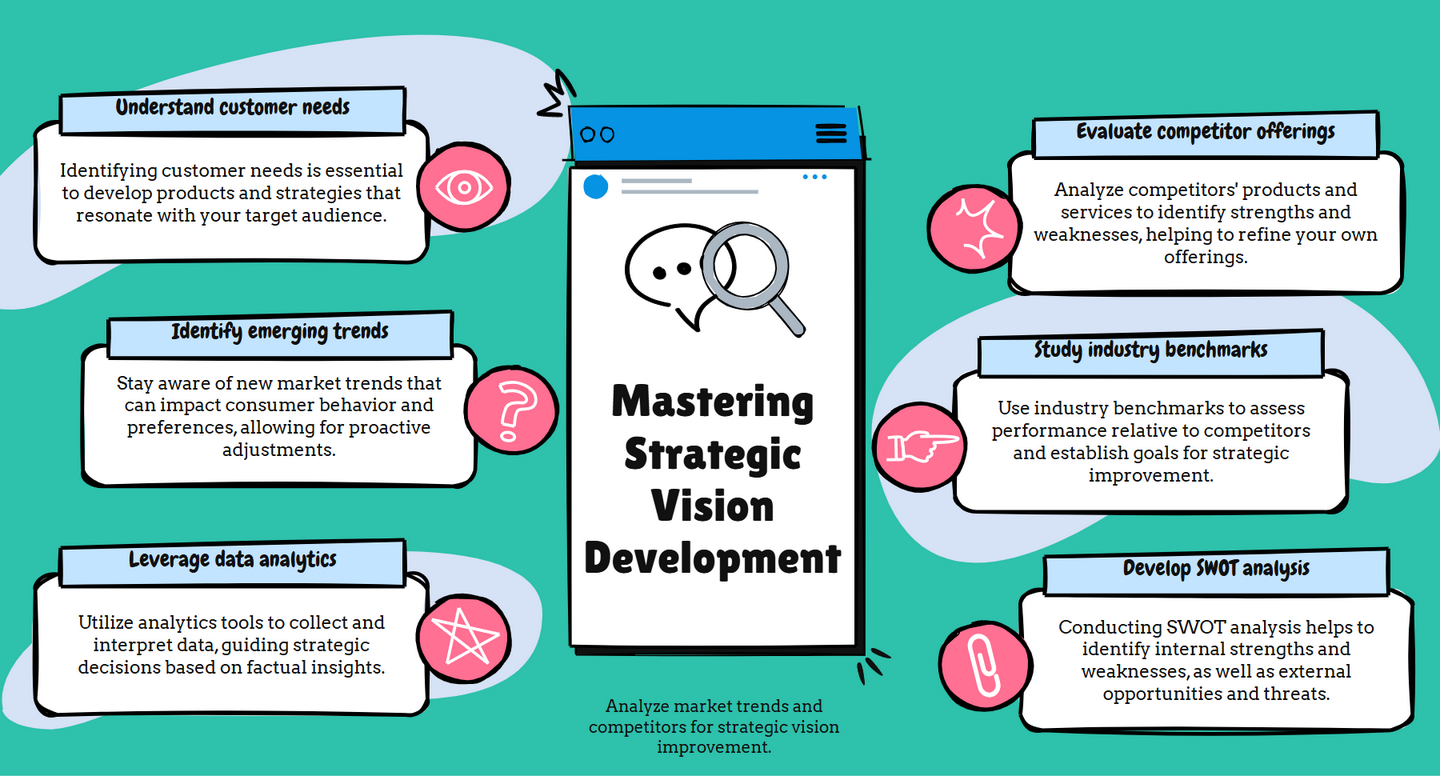
Discover 7 proven steps to master strategic vision development for explosive business growth. Learn expert strategies to craft a clear, actionable vision that drives success, boosts innovation, and propels your business forward in today’s competitive market.
Table of Contents
What is Strategic Vision Development?
Strategic vision development is the process of crafting a compelling, vivid projection of your organization’s future achievements. It transcends ordinary goal setting by outlining a focused, motivating vision of success that unites people behind a shared objective.
A well-developed strategic vision serves as your Guiding Light, helping you make informed decisions and stay focused on what matters most. It combines your current reality with your future aspirations, creating a bridge that connects where you are today with where you want to be tomorrow.
Why Strategic Vision Matters
A successful business begins with a clear direction. To achieve growth, you need more than a good idea; you need a strategic plan. By following these seven proven steps, you can position your business for measurable progress.
A strong strategic vision helps you see where you want to go and how to get there. It guides your decisions, keeps your team focused, and enables you to stand out in a crowded market. In this guide, we’ll walk you through each step, from understanding your current position to creating a plan that leads to lasting growth.
Step 1: Understand Your Current Position
Understanding your current position is a crucial first step in developing a strategic vision. It ensures your strategy is realistic and actionable by providing clarity on where your organization stands and what direction to take next.
Importance of Understanding Your Current Position
To build a growth-driven strategic vision, start with a clear view of your organization’s current state. Assess your internal strengths, market factors, and competitors. Without this foundation, your vision may miss reality, leading to misaligned or unattainable goals. A thorough evaluation grounds your vision in data and insights, enabling you to make informed choices and focus your resources effectively.
How to Assess Your Current Position
- Review your business performance: By examining your sales, profits, and customer feedback.
- Identify strengths and weaknesses: What does your business do well? Where can you improve?
- Analyze resources: Consider your team, finances, and technology.
Tip: Use tools like a SWOT analysis (Strengths, Weaknesses, Opportunities, Threats) to get a clear picture.
Step 2: Define Your Long-Term Goals
Defining long-term goals while developing a strategic vision requires a structured approach that aligns personal or organizational aspirations with actionable, forward-thinking plans. Setting clear, realistic goals is a key part of developing a strategic vision. Your goals should be specific, measurable, achievable, relevant, and time-bound (SMART).
Questions to Ask
- Where do you see your business in 3, 5, or even 10 years?
- What will true success look like for you and your team?
- How will you celebrate your progress along the way?
Step 3: Involve Key Stakeholders
Your vision will only succeed if everyone is on board. Involving your team and other stakeholders early in the process helps build support and gather valuable insights.

Early Involvement Reduces Resistance
Stakeholders should be engaged at the beginning of the decision-making process rather than after decisions are finalized. Early involvement reduces resistance, fosters ownership and trust, and facilitates smoother implementation.
Who Should Be Involved?
- Invite your leadership team to shape the future.
- Welcome employees from every department to contribute their expertise.
- Bring in key customers or partners for valuable insigh.t
How to Involve Them
- Facilitate workshops or brainstorming sessions.
- Gather feedback on your draft vision.
- Foster open communication.
Step 4: Analyze Market Trends and Competitors

Creating a good strategic plan begins with a careful examination of market trends and an understanding of what competitors are doing. Watching how the market changes helps organizations identify opportunities and avoid problems, while studying what competitors do well provides insights that inform decision-making. Bringing these insights together helps build a plan that aligns with business goals and customer needs, making the company stronger and enabling it to reach its objectives.
Market Trend Analysis
Market trend analysis reveals a complex landscape shaped by technological advancements, shifting consumer behaviors, and macroeconomic factors. Below is a concise overview of key trends across various sectors, based on current insights:
- Technological Advancements Driving Markets: Emerging technologies, such as AI and automation, are transforming industries, enabling increased efficiency and the development of new business models.
- Consumer Behavior Shifts: Consumers are increasingly prioritizing digital convenience and sustainability, which in turn influences their expectations for products and services.
- Economic and Market Outlook: Uncertainties in the global economy continue to impact investment and growth strategies, prompting a cautious yet optimistic outlook.
- Sector-Specific Trends: Each sector is experiencing distinct disruptions and innovations, highlighting the need for tailored strategies.
- Workforce and Market Structure: Ongoing changes in labor dynamics and market organization are reshaping talent needs and business operations.
Competitor Analysis
To analyze your competitors, follow these steps:
- Identify direct competitors (those offering the same products/audience) and indirect ones (those offering different products but sharing similar needs).
- Gather Competitive Intelligence: Research their products, pricing, and marketing strategies to gain a deeper understanding of their operations. Evaluate their website, social media presence, and any publicly available information, such as annual reports for publicly traded companies.
- For key competitors, perform a SWOT analysis to compare strengths, weaknesses, opportunities, and threats.
- Analyze each competitor’s product benefits, solved problems, and unique selling proposition.
Step 5: Craft a Clear Strategic Vision Statement

Single-Sentence Visions Are Memorized 8x More Often
While many organizations craft paragraph-long vision statements, neuroscience research reveals that single sentences are retained and recalled eight times more frequently by employees. The human brain processes and stores concise statements more efficiently, making them more likely to influence daily decision-making. Companies like Tesla (“To accelerate the world’s transition to sustainable transport”) demonstrate how powerful simplicity can be in creating memorable, actionable visions.
Creating a clear strategic vision statement is like drawing a map that shows your organization where it wants to go in the future. This statement should paint a clear picture of what success looks like for your company, using simple language that everyone can understand. Start by thinking about what you want your business to become in the next five to ten years, then write it down in one or two sentences that are easy to remember.
Tips for Writing a Vision Statement
Strategic Vision Development involves creating a clear and inspiring future path for your organization. It sets a long-term direction that guides decision-making and unites stakeholders.
Here are some concise tips for writing an effective vision statement:
- Keep it short and memorable. Convey your organization’s purpose and direction in 1-2 sentences.
- Focus on the Future: Describe an aspirational goal for the next 5-10 years, not your current state.
- Inspire and Motivate: Use positive, uplifting language to engage and energize stakeholders, employees, and customers.
- Align with Core Values: Core values are the foundational beliefs and guiding principles that define your organization’s culture and identity. Ensure the statement reflects these principles and your unique identity.
- Skip vague buzzwords. State a clear direction, but leave room to grow.
- Involve Stakeholders: Gather input from team members, leaders, or customers to ensure the vision resonates and feels inclusive.
- Make it Actionable: Craft a statement that guides decision-making and inspires measurable goals or strategies.
- Test for Clarity: Share drafts with others to check clarity and avoid using jargon.
Step 6: Develop a Strategic Plan

Strategic Planning Should Be Iterative, Not Linear
Most people treat strategic planning as a one-time annual event with a fixed sequence of steps. In reality, effective strategic planning is a continuous, cyclical process that adapts to changing circumstances. The best strategic plans incorporate feedback loops, enabling organizations to revisit and revise their strategies in response to new information, market shifts, or unexpected opportunities. This iterative approach means that planning documents should be living documents that evolve over the course of the year.
Developing a strategic plan provides a clear roadmap for an organization’s success and growth. The process includes defining long-term objectives and specifying actionable steps to reach them. Key goals and quantifiable outcomes must be set from the start.
Organizations should evaluate internal strengths and weaknesses, as well as external opportunities. Concrete action items must be documented, along with practical deadlines for each task. Every team member must understand the plan and their specific roles in executing it.
Progress should be tracked frequently, with revisions made when required. A robust strategic plan keeps the organization aligned with priorities and guides daily decisions. It ensures efficient use of time, funds, and personnel. Strategic planning inspires with a clear vision that achieves real results.
Step 7: Communicate and Implement Your Vision

Implementation Requires Systematic Unlearning
Effective vision implementation isn’t just about teaching new behaviors—it requires leaders to deliberately identify and dismantle existing practices that conflict with the new direction. Instead of focusing only on addition (new processes, new goals), leaders must also prioritize subtraction (removing contradictory systems). Start by creating specific “stop doing” lists and publicly celebrate the intentional abandonment of outdated practices. Commit to these actions as actively as you promote new ones to ensure your vision takes root.
Sharing a vision sets a clear path from where we are now to where we want to be. Creating clear goals and ensuring everyone understands them is crucial. Use simple language at first to help everyone follow. Continue discussing the goals with your team and explaining why they matter, so everyone stays aligned. Ask for input, as different viewpoints may reveal things you’ve missed. Break the vision into specific, doable steps.
Also, read more about communication tools
Conclusion: Take the First Step Toward Business Growth
Applying the seven key steps to develop a strategic vision can help differentiate your business. By assessing your current position, setting clear goals, engaging your team, analyzing the market, defining your vision, creating a strategic plan, and communicating effectively, you will be well-positioned for growth.
Remember, strategic vision development is an ongoing process. Continue to review and refine your plan as your business and the market evolve.
